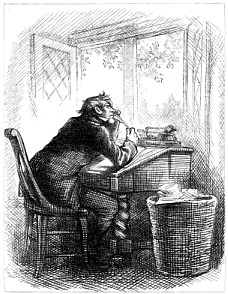Communication

 What is 'Communication'?
What is 'Communication'?
Communication in this context refers to the written presentation of the investigation. This should be reported such that the focus, process and outcomes are all clearly structured and expressed according to established scientific terminology and conventions.
Direct student access
Note that students have direct access to a version of this page written specifically for students (as opposed to teachers) at Communication in Complete course for students.
Achieving the maximum mark
To score the maximum of four marks for Communication the Individual Scientific Investigation needs to:
- Be written and presented clearly so that any errors do not hinder the understanding of the focus, process and outcomes.
- Be well structured so that the necessary information relating to focus, process and outcomes is presented coherently.
- Be concise and relevant so that the focus, process and outcomes can be readily understood.
- Use correct chemical terminology and conventions and attribute all sources in a recognised manner.
The following four areas are particularly important when it comes to assessing 'Communication'.
1. Clear presentation
The IB recognises that many students writing their report will be using English as a second language. The report does not have to be grammatically correct and spelling mistakes of non-scientific words will not be penalised. However it does need to be of a suitable standard so that it does not hinder the understanding of the research question, the methodology and the conclusion.
2. Structure
There is no absolute structure that the report should follow but it should flow logically and coherently. After the title page the report will normally start with an introduction that contains the research question. It should explain why the research question was deemed worthy of investigation and provide the background to set it into a scientific context. This will be followed by the methodology leading to the collection of raw data. After the raw data has been processed a discussion will follow relating the findings to the research question. The report will conclude with a conclusion and evaluation. The referencing of sources can either be given as footnotes on the pages where they occur or listed in a bibliography at the end of the report. The whole report should be between 6 to 12 sides of A4 paper. The report does not need an abstract and an appendix should not be included. This is stated clearly in the document Frequently Asked Questions available to be downloaded on programme resources section of My IB.
There is some debate about what is meant by 6-12 sides. It might be helpful to quote what is written in the answer to question 40 in the FAQs.
" There are no formal guidelines with regard to font size or style, margins or paper size. Teachers and students are expected to use common sense and follow the style that they normally adopt in school. This would usually mean a font size of between 10 and 12 pt. and A4 portrait format and a style that can clearly be read by teachers and moderators. The student does not need to include a cover page because the form 4/ICCS exists to provide all the relevant information. In addition, no abstract, nor table of contents is required.
The IA does not have to be double-line spaced and candidates will not be penalised if it is not double-line spaced. The IB has put out a general request for double-line spacing for all IA components in the diploma programme that are being uploaded as this will potentially make it easier for examiners to moderate and include comments on the work where appropriate.
There are no plans to make double-lined spacing mandatory in the sciences IA. If that was to be considered in the future, the recommended page limit (6 to 12 pages) would also be reviewed at the same time and a fair lead time would be given."
Although it is clearly not mandatory, double spacing, Arial font and font size 11 should help to put any external moderator into a good frame of mind! The 6 - 12 pages does to refer to single-spaced pages.
3. Concise and relevant
Students need to be economical with their words and choose them carefully. Sweeping statements and repetition should be avoided. Everything contained within the report should be directly relevant to the research question, which should remain the focus of the report throughout. Enough detail of the methodology should be given so that the work could be reproduced and the report should demonstrate that the student understands the theory behind the methodology and the processing of raw data.
4. Correct terminology
This is a report on a chemistry investigation. It must use correct and consistent chemical terminology. All graphs, tables and images should be labelled correctly. Use of scientific notation is encouraged to ensure the correct use of significant figures. Appropriate units should be used. All statements of fact, images, diagrams or quotations etc. attributable to others should be referenced in a consistent and recognised format.

 IB Docs (2) Team
IB Docs (2) Team